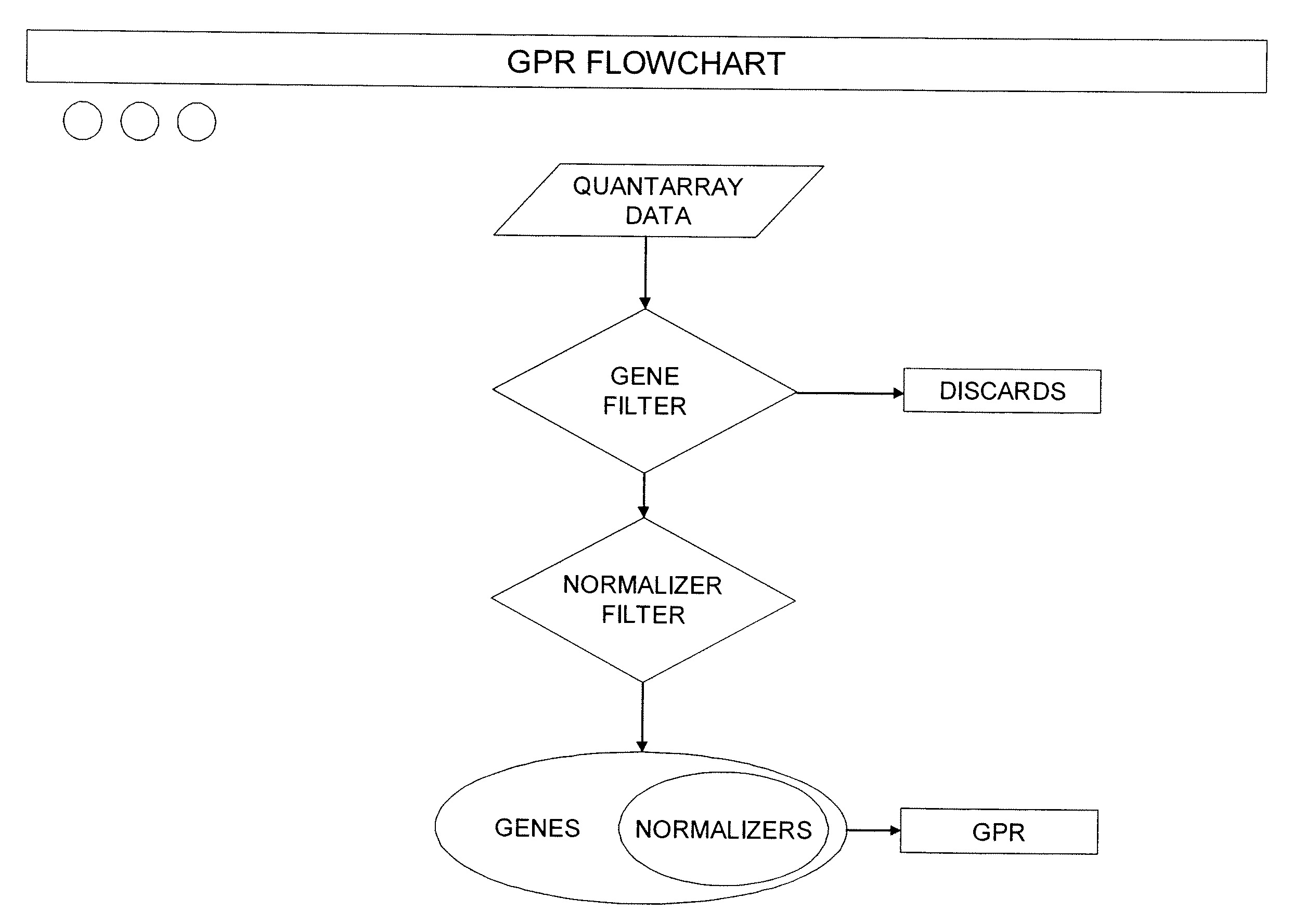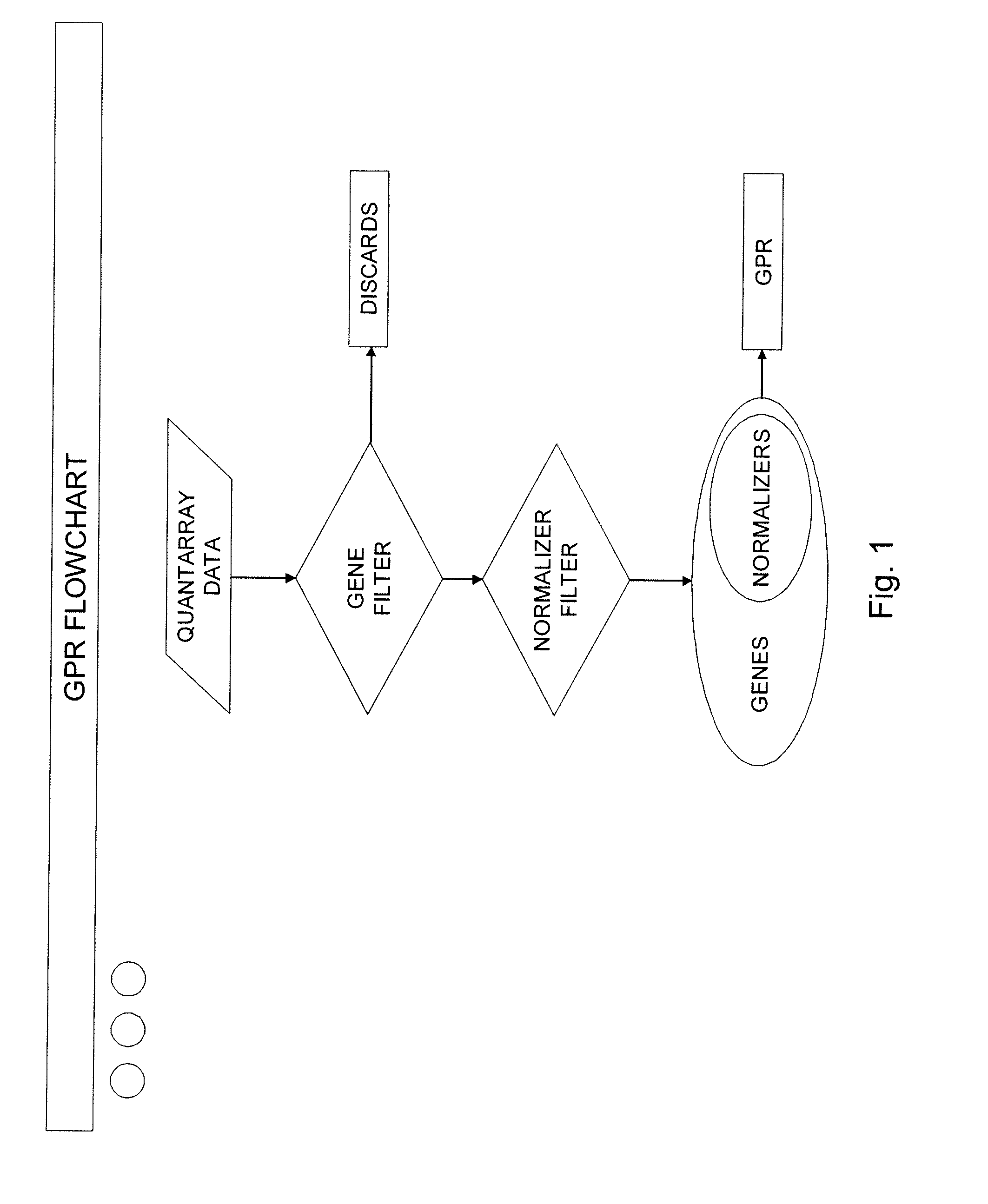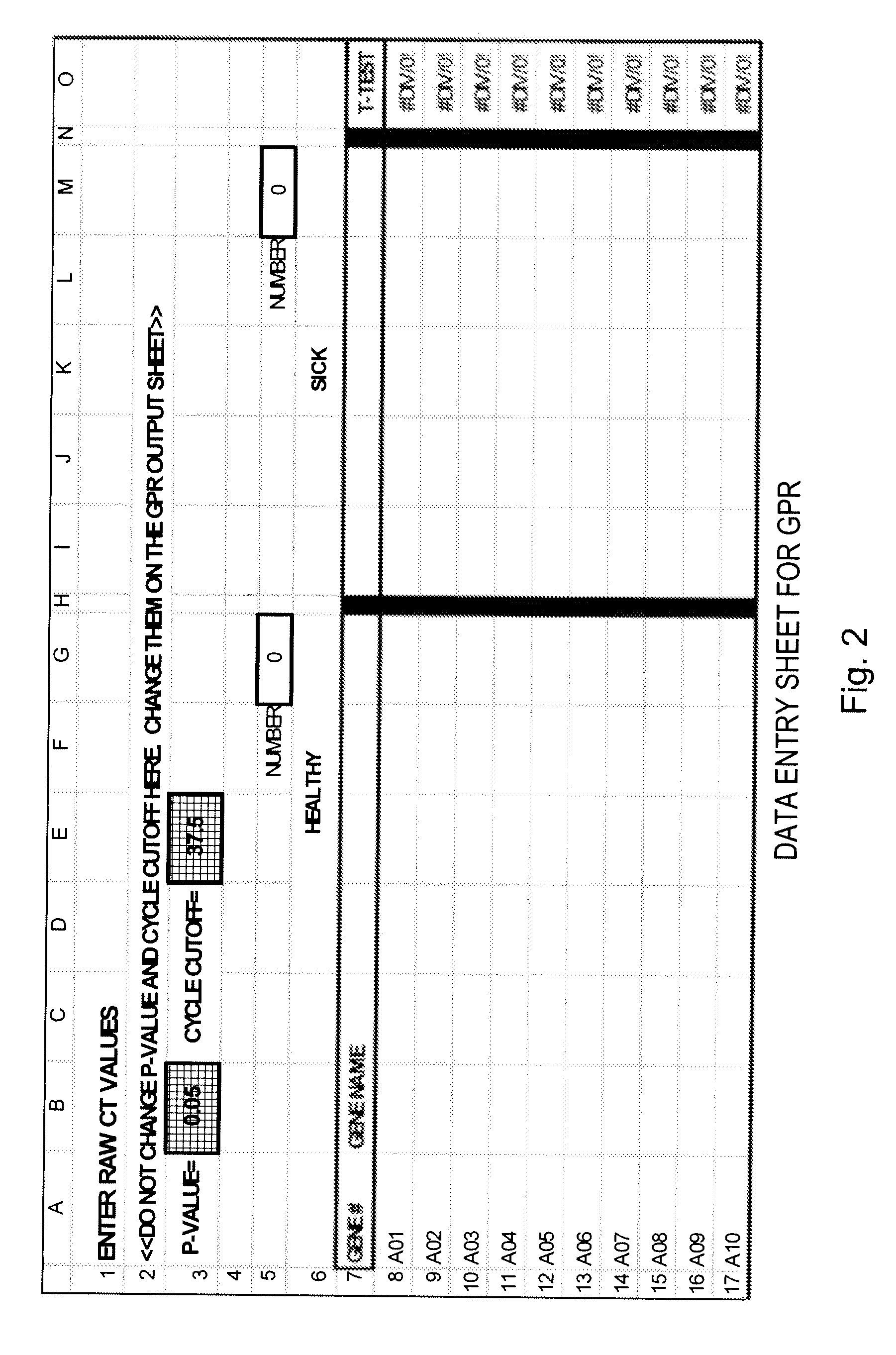Expression Data Analysis Systems and Methods
- Summary
- Abstract
- Description
- Claims
- Application Information
AI Technical Summary
Benefits of technology
Problems solved by technology
Method used
Image
Examples
Embodiment Construction
[0025]To provide an overall understanding of the invention, certain illustrative embodiments will now be described. For purpose of clarity, the invention will be described largely with reference to QPCR methods for analyzing large array of gene expression data. However, it will be understood by one of ordinary skill in the art that the systems and methods described herein can be adapted and modified for other suitable applications and that such other additions and modifications will not depart from the scope hereof. Such applications include, but are not limited to the analysis of microarrays, macroarrays, and protein arrays. For example, the systems and methods described herein have been adapted for performing microarray analysis of 25,000 genes or more. Other applications include the analysis of medical images to assess the level of disease progression and the effects of disease treatment. The techniques may also be used to analyze results from biometric recognition studies (e.g.,...
PUM
| Property | Measurement | Unit |
|---|---|---|
| Volume | aaaaa | aaaaa |
| Fraction | aaaaa | aaaaa |
| Fraction | aaaaa | aaaaa |
Abstract
Description
Claims
Application Information
 Login to View More
Login to View More - R&D
- Intellectual Property
- Life Sciences
- Materials
- Tech Scout
- Unparalleled Data Quality
- Higher Quality Content
- 60% Fewer Hallucinations
Browse by: Latest US Patents, China's latest patents, Technical Efficacy Thesaurus, Application Domain, Technology Topic, Popular Technical Reports.
© 2025 PatSnap. All rights reserved.Legal|Privacy policy|Modern Slavery Act Transparency Statement|Sitemap|About US| Contact US: help@patsnap.com



